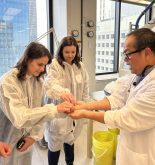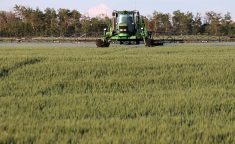For Brian Evans, Canada’s chief veterinary officer and chief food safety officer, it is the picture that tells thousands of words.
In his long-running campaign to promote vigilant biosecurity measures on Canadian farms, Evans often ends his presentation with a photograph of a green, serene, peaceful English countryside scene.
The bucolic vista masks a sad and tragic agricultural horror story.
Evans used it Feb. 2 at the end of a presentation to the Dairy Farmers of Canada annual policy convention.
I’ve seen the photo and heard the story before and yet it always moves me. When I see it, I brace myself for the end.
Read Also

Government, industry seek canola tariff resolution
Governments and industry continue to discuss how best to deal with Chinese tariffs on Canadian agricultural products, particularly canola.
It is a photo of farm fields stretching up an English country hill, verdant and tranquil.
But it should be white, says Evans — white with sheep and lambs.
This is an English sheep farm in 2001 after foot-and-mouth disease decimated England’s sheep industry, leading to dramatic pictures of funeral pyres of thousands of dead sheep being cremated to kill the spread of the disease.
The farm in the photo had been depopulated. It had been a family sheep farm for generations.
The farmer-owner became a prime source of information for Canadian veterinarians, including Evans, who went to England that awful summer to help and to learn.
The Canadian vets listened to his sad tale of not being prepared to deal with the F&D outbreak and watching his livelihood being destroyed.
But it was worse than that.
He told them his life patterns were shattered because the sheep were gone.
They would wake him in the morning with their baas and let him go to sleep at night when they went quiet, He talked about the guilt he felt that he had let down his ancestors who built the sheep farm and bequeathed it to him in trust for the next generation.
It was much more than a business loss.
As the Canadian vets were leaving, the photo of his green, sheepless farm was snapped.
Within days, his wife called. “Three days after the picture was taken, he took his own life,” said Evans.
He uses the photo to stress that animal disease is more than a business loss.
“To me, it so underscores that while many naturally focus on or define animal disease outbreaks by the very significant economic consequences that may arise, invariably there are potentially devastating social, human health and other consequences as well that must not be ignored in decision making/recovery efforts and these too are reasons for focusing on biosecurity in a world of global pathogens,” he wrote in an email after the DFC presentation.
In this case, a photo is worth much more than 1,000 words.
It is a powerful visual image supporting Evan’s argument that farmers who ignore biosecurity are risking more than their business interests.
















